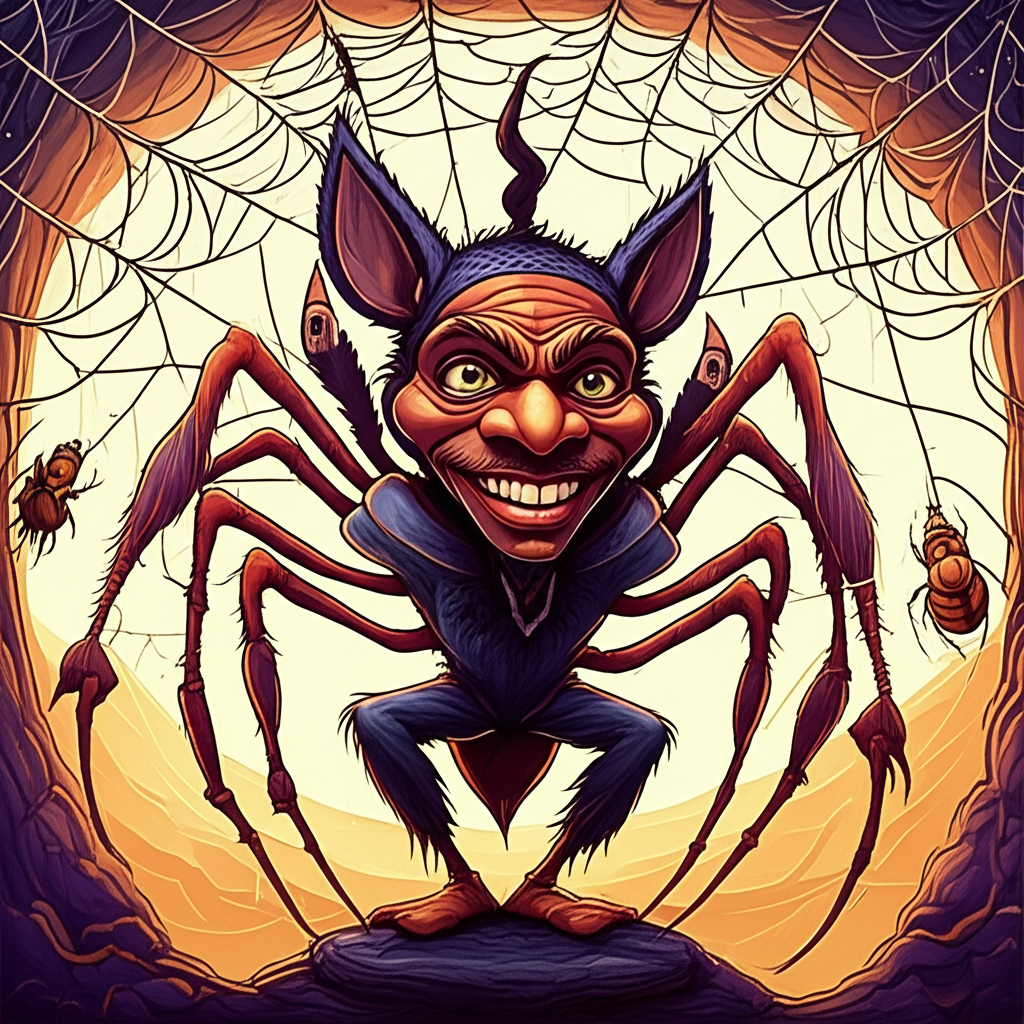
From the vibrant tapestry of West African folklore, specifically the rich traditions of the Akan people of Ghana, emerges a captivating figure known as Anansi the Spider. These are not merely tales; they are echoes of ancient wisdom, passed down through generations, offering insights into the world as perceived by those who first shared them. Anansi’s stories, and the legendary journey of his “web of stories,” are a testament to the enduring power of human imagination and the universal desire to understand life’s complexities.
The origins of Anansi’s tales are deeply rooted in a time when oral traditions were the primary means of transmitting knowledge, history, and cultural values. Imagine the villages of the Akan people, nestled amidst lush rainforests and savannas. Life was intrinsically linked to the rhythms of nature – the changing seasons, the bounty of the land, the mysteries of the animal kingdom. The people of that era viewed the world as a place where the natural and the supernatural often intertwined. They sought explanations for phenomena, from the thunder’s roar to the cunning of a fox, and found them in the actions of anthropomorphic animals and the clever machinations of beings like Anansi. Their worldview was one of interconnectedness, where the actions of individuals, even seemingly small creatures, could have far-reaching consequences.
Anansi, the central figure in these narratives, is not a god or a divine entity, but a trickster spirit, often depicted as a spider, though sometimes appearing in human form. He is characterized by his immense intelligence, his insatiable curiosity, and his remarkable cunning. Symbolically, Anansi embodies the spirit of innovation, resourcefulness, and the sometimes-unpredictable nature of wisdom. His small stature belies his grand ambitions, and his eight legs, often seen as a symbol of his interconnectedness, allow him to weave intricate plans and, in the context of his legendary journey, to spread his influence far and wide. He represents the human capacity for both great cleverness and profound self-interest, a duality that makes his stories so enduringly relatable.
The most famous of Anansi’s exploits, and the one that underpins the concept of his “web of stories,” is his audacious quest to acquire all the stories in the sky from Nyame, the Sky God. In this ancient narrative, the world was a dull place, devoid of the captivating tales that now enrich our lives. Anansi, ambitious and ever-seeking knowledge, set out to possess them. He approached Nyame with a proposal: he would capture a series of impossibly difficult creatures – the hornets, the snake, the leopard, and the python – in exchange for all the stories. Nyame, perhaps amused or intrigued by Anansi’s audacity, agreed.
With his characteristic wit and ingenuity, Anansi embarked on his mission. He didn’t rely on brute force, but on his keen observation and clever manipulation. For the hornets, he pretended it was raining and tricked them into a gourd. He then fashioned a vine to look like a snake and convinced the real snake that it was being used as a swing. For the leopard, he used a trap woven from vines, playing on its predatory instincts. Finally, he convinced the python to allow itself to be tied up, promising it a more comfortable resting place. Through these ingenious feats, Anansi, the humble spider, outsmarted the formidable creatures and presented them, bound and defeated, to Nyame.
Impressed by Anansi’s resourcefulness, Nyame bestowed upon him the coveted stories. Anansi, with his new treasure, didn’t hoard them. Instead, he began to weave them into a magnificent, invisible web that stretched across the land. This “web of stories” allowed him to disseminate knowledge, entertainment, and wisdom to all who would listen. Whenever someone told a story, they would say, "This story belongs to Anansi," acknowledging the source of their inspiration. Thus, Anansi became the weaver of tales, and his web became a metaphor for the interconnected network of narratives that bind communities and transmit culture.
The symbolism embedded within Anansi’s journey is multifaceted. His quest for the stories represents humanity’s innate desire for knowledge, understanding, and the power that comes with them. The difficult creatures he captures can be seen as symbolic of life’s challenges – the ferocity of nature, the cunning of adversaries, the obstacles that block progress. Anansi’s success, achieved through intellect rather than might, highlights the value placed on wisdom, cleverness, and the ability to think outside the box. The web itself is a powerful metaphor for communication, community, and the interconnectedness of all things. It signifies how stories, once shared, can spread and influence, creating a shared cultural heritage.
In the modern world, Anansi continues to captivate imaginations. He is a beloved character in children’s literature, where his adventures are retold with vibrant illustrations and engaging prose. His trickster persona has inspired characters in movies and video games, often embodying a blend of wit and mischief. In academic circles, Anansi is studied as a significant figure in folklore, offering valuable insights into West African cosmology, social structures, and moral teachings. His stories serve as a rich source for understanding cultural transmission and the evolution of narrative traditions.
It is crucial to reiterate that Anansi is a figure from traditional storytelling, a product of ancient cultural narratives. These tales were created by people to explain their world, to entertain, and to impart lessons. As Muslims, we recognize that only Allah (God) is the true Creator and Sustainer of all things. Our understanding of creation and existence is firmly rooted in the divine revelations provided to us.
Anansi’s journey of his web of stories, therefore, stands as a powerful testament to the enduring human capacity for imagination and storytelling. It is a cultural heritage, a reflection of the ingenuity and worldview of the Akan people. These narratives, like the threads of Anansi’s web, connect us to the past, enrich our present, and continue to inspire wonder and reflection on the nature of wisdom, cunning, and the stories that shape our understanding of the world.





